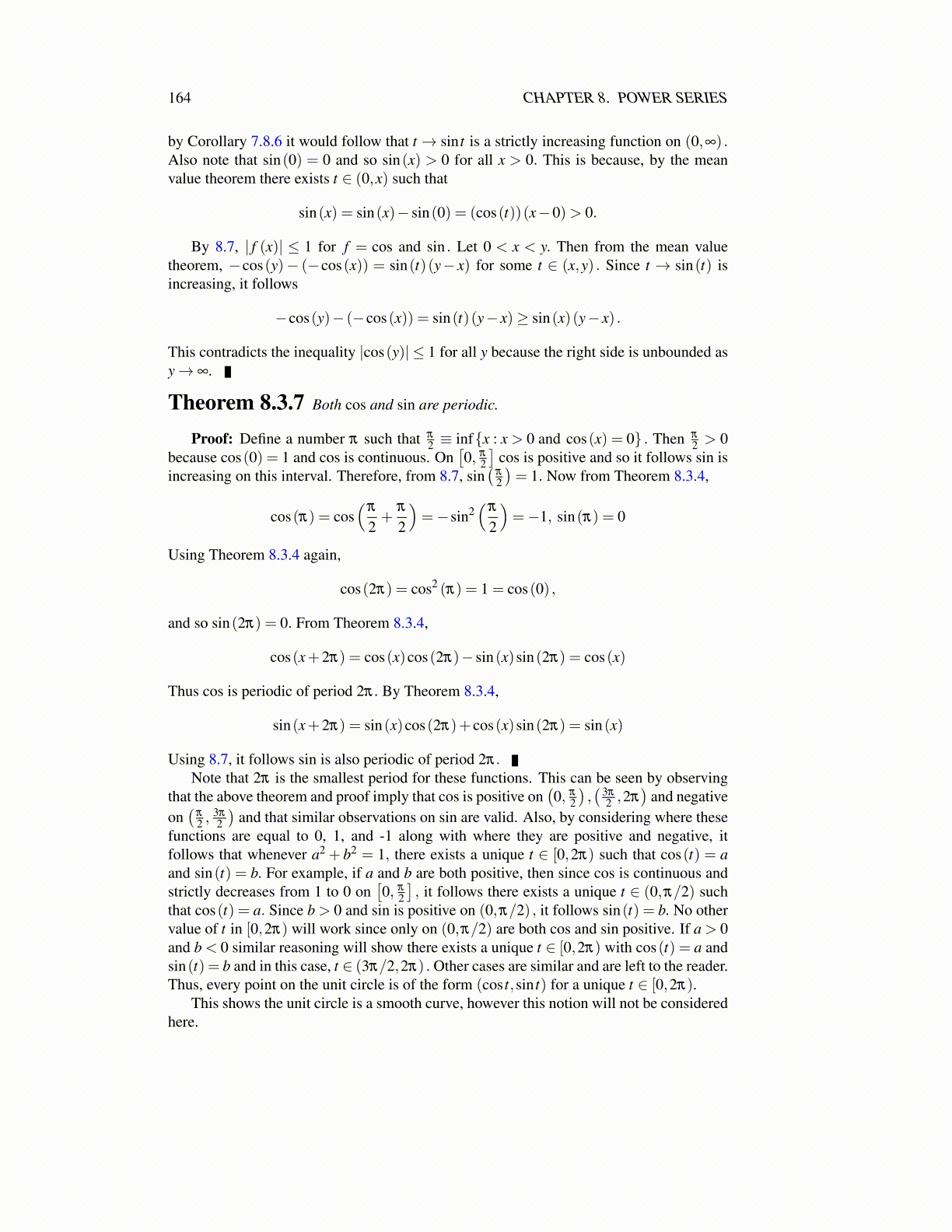
164 CHAPTER 8. POWER SERIES
2. exp is the unique solution to the initial value problem
y′− y = 0, y(0) = 1 (8.11)
3. For all x,y ∈ Fexp(x+ y) = exp(x)exp(y) (8.12)
4. exp is one to one mapping R onto (0,∞) .
Proof: To begin with consider 8.12. Fixing y it follows from the chain rule and thedefinition using power series that
x→ exp(x+ y)− exp(x)exp(y)
satisfies the initial value problem of Lemma 8.3.9 and so it is 0. This shows 8.12.8.11 has already been noted. It comes directly from the definition and was proved in
Lemma 8.3.9. The claim that exp(x)> 0 was also established in the proof of this lemma.Now from the power series, it is obvious that exp(x)> 0 if x > 0 and by Lemma 8.3.9,
exp(x)−1 = exp(−x) , so it follows exp(−x) is also positive. Since exp(x)> ∑2k=0
xk
k! , it isclear limx→∞ exp(x) = ∞ and it follows from this that limx→−∞ exp(x) = 0.
It only remains to verify 4. Let y ∈ (0,∞) . From the earlier properties, there exist x1such that exp(x1) < y and x2 such that exp(x2) > y. Then by the intermediate valuetheorem, there exists x ∈ (x1,x2) such that exp(x) = y. Thus exp maps onto (0,∞). It onlyremains to verify exp is one to one. Suppose then that x1 < x2. By the mean value theorem,there exists x ∈ (x1,x2) such that
exp(x)(x2− x1) = exp′ (x)(x2− x1) = exp(x2)− exp(x1) .
Since exp(x)> 0, it follows exp(x2) ̸= exp(x1).
8.4 ln and logbIn this section, the inverse function of x→ exp(x) is considered.
Definition 8.4.1 ln is the inverse function of exp . It follows from the definition ofinverse functions that ln : (0,∞)→ R , ln(exp(x)) = x, and exp(ln(x)) = x. The number eis that number such that ln(e) = 1.
By Corollary 7.10.2, it follows ln is differentiable. This makes possible the followingsimple theorem.
Theorem 8.4.2 The following basic properties are available for ln .
ln′ (x) =1x. (8.13)
Also for all x,y > 0,ln(xy) = ln(x)+ ln(y) , (8.14)
ln(1) = 0, ln(xm) = m ln(x) (8.15)
for all m an integer.